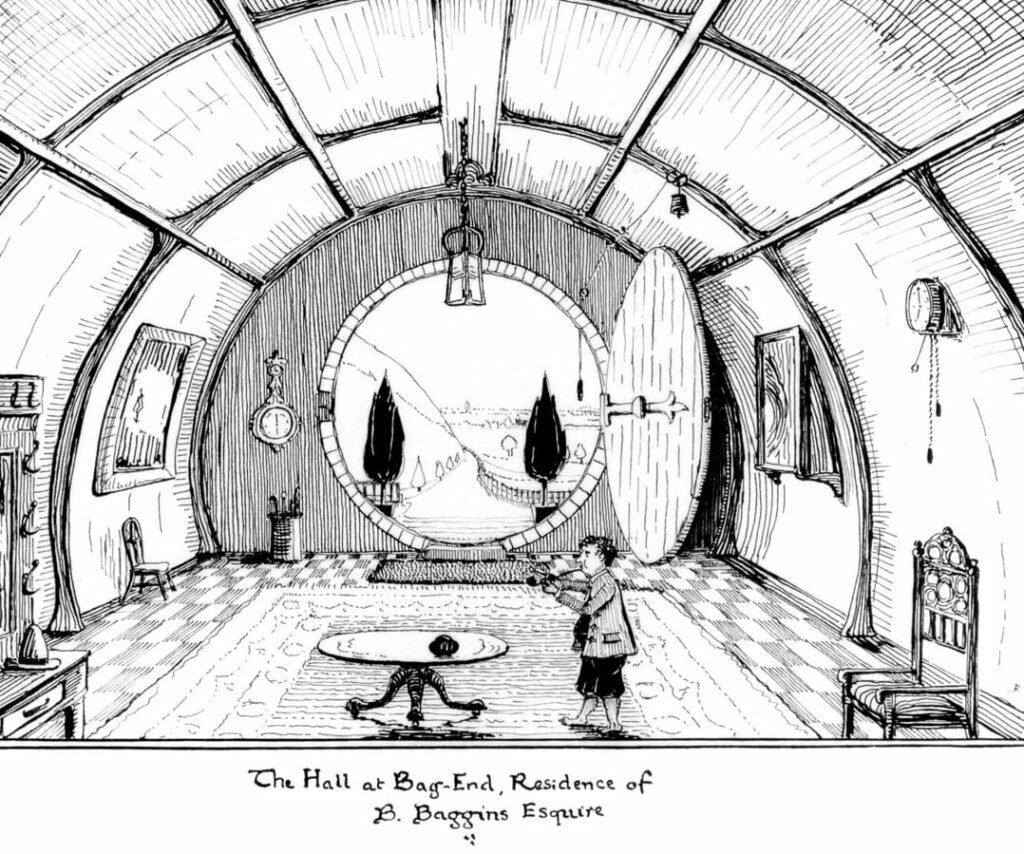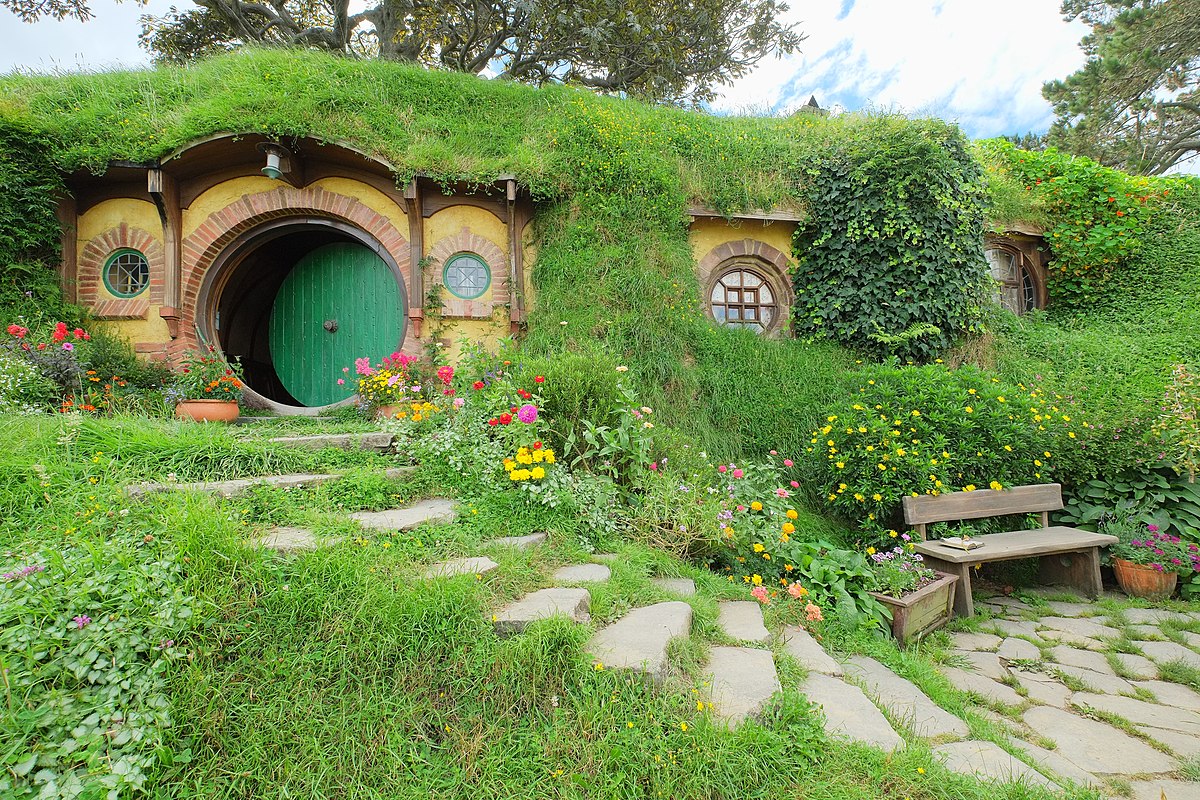Faërie is a perilous land, and in it are pitfalls for the unwary and dungeons for the overbold….
…The realm of fairy-story is wide and deep and high and filled with many things: all manner of beasts and birds are found there; shoreless seas and stars uncounted; beauty that is an enchantment, and an ever-present peril; both joy and sorrow as sharp as swords.
On Fairy Stories, J.R.R. Tolkien
To the budding Tolkien scholar, doubtless one of the first concepts encountered is that of ‘faerie.’ It is, in Tolkien’s works, a nuanced, layered, and complex term, encapsulating and hinting at a great many things, including narrative theory, the philosophy of fantasy, the realisation of sub-creation, and even theology. Hence, it is also a crucial term to consider (if not always a simple one to appreciate!).
As the name hints, On Fairy Stories is the natural place to begin in consideration of Tolkien’s Faerie, and as far as this year’s blog series will be concerned, OFS is required reading (though it is neither long nor onerous, and is extremely worthwhile). It is in OFS that Tolkien expands most fully upon his theological and his cultural ideas of Faerie, and its place in story and myth. That being said, it is difficult to find a Tolkien work that does not consider Faerie on some level – whether it be academic (as with OFS), personal (as with many of his letters, such as the well-known Letter 131) or settled as the bedrock of his fiction and fantasy. Indeed, even the unreadily-labelled Mythopoeia is yet another worthwhile piece that considers the value and the making of faerie.
But for this series, OFS will suffice, assuming a basic overall familiarity with Tolkien’s fiction and his ideas. For, in OFS, much of what Tolkien does on a creative level in works such as The Hobbit, The Lord of the Rings, and his other material (Middle-earth based or not) is laid bare…even as the significance and richness of Tolkien’s work is more fully revealed by the ideas of OFS.
Speaking of which, however, I have not yet properly laid out the full framework for this year’s series! For, to be clear, merely taking ‘Faerie’ is far too mighty a task for any single person, and even ‘the Faerie in Tolkien’ is a massive task (and, not to mention, one undertaken by far worthier and better-prepared scholars than I). And, tempting though it might be to consider Tolkien’s Faerie on its own terms, or through the perspective of his own faeriean Elves, I’ve elected to take a different route.
For, of all Tolkien’s memorable and compelling inventions, I feel that it is his humble hobbits that in some ways occupy the most fascinating intersectionality with Faerie. Tolkien’s hobbits are Men on one level…but are very profoundly un-Mannish on others. Of all the denizens of Middle-earth, they are the ones closest to ‘civilisation’ (particularly the civilisation of Tolkien’s youth), yet they are also most assuredly separated from the world. It is through the eyes of the Hobbits that we experience the great events of the end of the Third Age and are thus granted faerie passage, and the Hobbits themselves all undergo clear and admirable ennoblement through their faerie journeys. In short, Hobbits seem a fascinating perspective to me from which to consider Tolkien’s Faerie, and it is thus with a hobbitish bent that I intend to explore the faerie of the Legendarium across this month.
By way of example, consider one of the most celebrated opening sentences in the history of English literature:
In a hole in the ground there lived a hobbit.
The Hobbit, Chapter I, ‘An Unexpected Party,’ by J.R.R. Tolkien

To the unsuspecting and unknowing first-time reader, every word in this sentence is perfectly cromulent; bar the titular ‘hobbit.’ It is a sentence that is profoundly ordinary and decidedly enigmatic. And it is a sentence that then is built upon in the following paragraphs, with strangeness and familiarity ever carefully vying with each other. For holes are not strange. Warm, dry and cosy homes are not strange. But such homes in holes? As unfamiliar as a green sun, and hence as arresting (even though the assured familiarity of each is a great aid to our picturing of it).
And this extends to the hobbit himself, and with good reason. For Bilbo is a denizen of Faerie; of this Secondary World of Tolkien, and is thus a creature intended to provoke wonder. Yet Bilbo is also our intermediary, a guide and a set of eyes through which we are intended to perceive this Faerie-realm. Bilbo (and, I would contend, all hobbits by design…or at least those few hobbits known for their Adventures) is thus a creature both of and not of Faerie. A familiar sight from an alien world, a stranger in a still stranger land. Of all Tolkien’s sub-created Faerie beings, his hobbits are the most intriguing for the dual and contradictory role that they play; and this makes them worthy of discussion.
So, over the coming few weeks, we’re going to be considering the Faerie in Tolkien, and especially how that Faerie relates to hobbits. We’ll be examining the Shire and its various prejudices, suspicions and dislikes of Faerie, and what these opinions reveal to us about hobbitish society in general. We’ll be looking at Faerie as an intersection between peoples, as an experience that need not be passive or one-sided but can be mutually enriching, as memorably demonstrated between Merry and Pippin, Treebeard, and Thèoden. And we’ll be considering the constant allure of Faerie and its compelling qualities, and how this lasting lure manifests in the hobbits of the Fellowship long after the end of their Quest…and how this contrasts with another of Tolkien’s faerie-touched protagonists.
And, as always, there may be a small and novel postscript planned that considers Faerie and Hobbits from a rather different perspective – but you’ll have to wait until the end of September for that!
So join me over the coming weeks as, with Tolkien and Tolkien’s hobbits at our side, we peer through the veil of Faerie, and seek to spy what secrets and delights may in that realm be hid.
“My dear Frodo!’ exclaimed Gandalf. ‘Hobbits really are amazing creatures, as I have said before. You can learn all that there is to know about their ways in a month, and yet after a hundred years they can still surprise you at a pinch.”
The Lord of the Rings, Book I, Chapter 2, ‘The Shadow of the Past,’ by J.R.R. Tolkien
~~~~~~~~~~~~~
Thanks for reading – feel free to check out anything else you may be interested in on the blog, there’s plenty more to discover! Follow me on Facebook and on Twitter to stay up to date with The Blog of Mazarbul, and if you want to join in the discussion, write a comment below or send an email. Finally, if you really enjoyed the post above, you can support the blog via Paypal, and keep The Blog of Mazarbul running. Thanks for reading, and may your beards never grow thin!
